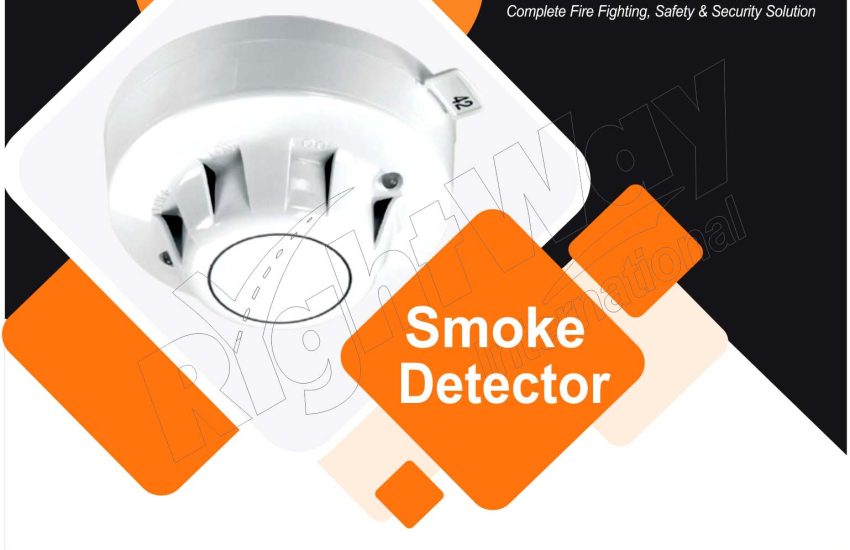Smoke Detectors: Smoke Detector are essential safety devices designed to detect the presence of smoke in a building and alert occupants to potential fires. They play a crucial role in protecting lives and property by providing early warning of a fire. This article explores the types of smoke detectors, how they work, installation tips, and maintenance practices to ensure they function effectively.
Types of Smoke Detectors
1. Ionization Smoke Detectors
Ionization smoke detectors are highly sensitive to flaming fires that produce small combustion particles. They use a small amount of radioactive material to ionize the air within a sensing chamber. When smoke enters the chamber, it disrupts the ionization process, triggering the alarm. These detectors are known for their quick response to fast-flaming fires.
2. Photoelectric Smoke Detectors
Photoelectric smoke detectors are designed to detect smoldering fires, which produce larger smoke particles. They use a light source and a sensor within the detector. Smoke particles scatter the light, which then hits the sensor and activates the alarm. Photoelectric detectors are generally more effective at detecting slow-burning fires with less visible smoke.
3. Dual-Sensor Smoke Detectors
Dual-sensor smoke detectors combine both ionization and photoelectric technologies in a single unit. This combination allows them to respond to a broader range of fire types, offering comprehensive protection against both fast-flaming and smoldering fires.
4. Heat Detectors
Though not technically smoke detectors, heat detectors are often used in conjunction with smoke detectors. They respond to changes in temperature rather than smoke. Heat detectors are useful in areas where smoke detectors might produce false alarms, such as kitchens.5. Combination Smoke and Carbon Monoxide Detectors
These detectors combine smoke detection with carbon monoxide (CO) detection, providing dual protection. They alert occupants to both smoke and dangerous levels of carbon monoxide, which is a colorless, odorless gas that can be deadly.
How Smoke Detectors Work
Smoke Detector operate through different sensing technologies, but their primary function remains the same: detecting smoke and alerting occupants. Here’s a basic overview of how they work:
1. Detection Mechanism
- Ionization Detectors: Use radioactive material to ionize air in a sensing chamber. Smoke disrupts this ionization, causing the alarm to sound.
- Photoelectric Detectors: Use a light source and sensor. Smoke scatters light in the sensing chamber, triggering the alarm.
2. Alarm Activation
Once smoke is detected, the smoke detector activates an audible alarm, typically a loud beeping sound. Some models may also include visual indicators like flashing lights.
3. Communication
Modern smoke detectors may be interconnected, allowing one detector to trigger alarms on other units in different rooms or areas. This interconnected system ensures that all occupants are alerted, regardless of where the fire starts.
Installation Tips
1. Location
- Placement: Install smoke detectors on every level of the home, inside each bedroom, and outside sleeping areas. Ensure that detectors are placed on the ceiling or high on the wall, as smoke rises.
- Avoid Obstacles: Do not install detectors near cooking appliances, bathrooms, or areas with high humidity, as these conditions can cause false alarms.
2. Mounting
- Ceiling Installation: Mount detectors at least 4 inches from any wall. If installing on the wall, place them 4 to 12 inches below the ceiling.
- Avoid Drafts: Do not install detectors near windows, vents, or air ducts where drafts can interfere with their operation.
**3. Power Source
- Battery-Powered: Ensure batteries are replaced annually or as needed. Consider using long-life batteries that can last up to 10 years.
- Hardwired: If the detector is hardwired, ensure it is connected to a reliable power source and has a backup battery in case of a power outage.
Maintenance Practices
1. Regular Testing
Test smoke detectors monthly by pressing the test button. This ensures that the alarm sounds and the unit is functioning properly.
2. Cleaning
Dust and debris can interfere with a smoke detector’s sensors. Clean detectors regularly with a vacuum cleaner or a soft brush to remove any buildup.
3. Battery Replacement
For battery-powered detectors, replace the batteries at least once a year or when the low battery warning sounds. For hardwired detectors with battery backup, replace the backup battery as recommended.
4. Sensor Replacement
Smoke detectors have a lifespan of 8 to 10 years. Replace the entire unit if it reaches this age or if it fails to operate correctly even after replacing the batteries and cleaning.
5. Professional Inspection
Consider having your smoke detectors inspected by a professional to ensure they are properly installed and functioning. This is particularly important in larger or complex buildings.
Conclusion:
Smoke Detector are vital for protecting lives and property by providing early warnings of fire. Understanding the different types of detectors, how they work, and the best practices for installation and maintenance can significantly enhance your fire safety measures. Regular testing, cleaning, and timely replacement of smoke detectors ensure they remain effective in detecting potential fires and alerting occupants promptly. Investing in proper smoke detection is a crucial step in safeguarding your home or business against the devastating effects of fire.


